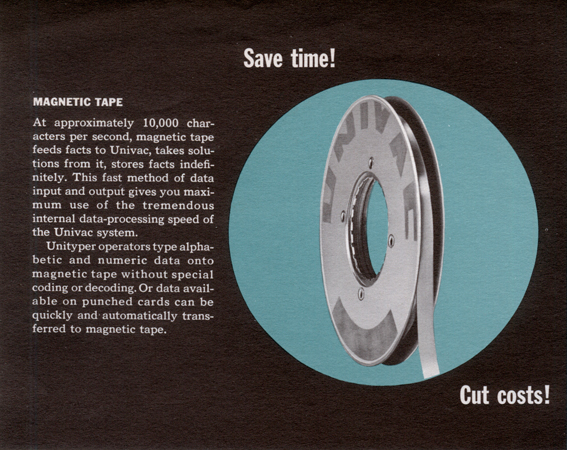Univac metallic computer tape (1951)
UvA Computer Museum catalogue nr 03.47

Tape was exclusively used on the Univac, until the computer-grade polyester tape was developed by 3M Corporation, under the supervision of IBM [2]. The first IBM tapedrives were sold in 1952. 'Magtapes' - still a half inch wide and on similar reels as the Univac metal tape - were universally adopted in the computer industry, also by Remington Rand, which in the mean time had acquired the Eckert & Mauchly company. Magtape would be the standard of industry until the late 1990's.
Notice that, in the early electronic computers, magnetic tapes were used where we would use a hard disk today. After the advent of high-capacity rotating magnetic memory devices, magnetic tapes were only used for back-up and long-term data storage.
The picture of the tape was taken from a 1983 Remington-Rand / Univac folder. Evidently, the metal-tape drives were not immediately abolished though (or because) they were not suitable for processing the new IBM-style plastic tapes.
[1] Fundamentals of digital magnetic-tape drives, Sperry-Rand Corporation 1966.
[2] IBM's Early Computers, MIT Press 1986.
This tape was donated by the Koninklijke Bibliotheek, The Hague.
